#will chatgpt replace html designers
Explore tagged Tumblr posts
Text
The Future of Full-Stack Web Development: Trends, Tools, and Technologies to Watch
In the ever-evolving world of tech, few areas have seen as much rapid growth and transformation as full stack web development. What used to be a clear separation between frontend and backend has now turned into a more seamless, hybrid model, where developers are expected to juggle both ends of the spectrum. But where is this all heading?
As we look into the future of full-stack web development, it's clear that exciting changes are on the horizon — from smarter tools and frameworks to revolutionary technologies that promise to redefine how we build for the web. If you're a developer, student, or tech enthusiast, it's time to pay attention.
What is Full Stack Web Development?
Before diving into future trends, let’s briefly revisit what full stack web development really means. A full stack developer works on both:
Frontend (client-side): Everything users interact with — HTML, CSS, JavaScript, and UI frameworks like React or Vue.js.
Backend (server-side): Databases, servers, APIs, and the business logic behind the scenes using technologies like Node.js, Python, Ruby, or Java.
A full stack developer is essentially a digital Swiss Army knife — versatile, adaptable, and always in demand.
Emerging Trends in Full Stack Web Development
Here’s what’s shaping the future:
1. The Rise of Jamstack
Jamstack (JavaScript, APIs, and Markup) is becoming the preferred architecture for faster, more secure, and scalable web applications. Unlike traditional stacks, Jamstack decouples the frontend from the backend, improving performance and simplifying development.
2. AI-Powered Development Tools
Artificial Intelligence is now making its way into code editors and development platforms. Think GitHub Copilot or ChatGPT. These tools assist in writing code, identifying bugs, and even generating entire functions — speeding up the full stack workflow.
Benefits:
Faster coding with AI suggestions
Error prediction and debugging assistance
Smart documentation generation
3. Serverless and Edge Computing
Forget managing traditional servers — serverless architectures and edge computing are becoming the new standard. They allow developers to deploy applications with minimal infrastructure concerns, focusing purely on code and performance.
4. Component-Based Development
Modern frontend frameworks like React, Angular, and Vue are pushing developers towards building reusable components. This modular approach is now extending into the backend too, creating consistent development patterns across the stack.
Tools to Watch in Full Stack Development
To stay relevant, developers must keep their toolkits updated. Here are some must-watch tools shaping the future:
Frontend Tools
React (with Next.js) – For server-side rendering and static generation
Svelte – Lightweight and highly efficient for reactive apps
Tailwind CSS – Utility-first CSS framework for rapid UI development
Backend Tools
Node.js – Continues to dominate with asynchronous performance
Deno – A secure runtime from Node.js’s creator
GraphQL – Replacing REST APIs with a more flexible query language
DevOps & Hosting
Vercel & Netlify – Leading platforms for seamless frontend deployment
Docker & Kubernetes – For containerization and orchestration
Firebase & Supabase – Backend-as-a-service options for fast prototyping
Key Technologies Shaping the Future
Let’s look at the bigger innovations redefining full stack web development:
WebAssembly (WASM): Bringing languages like C++ and Rust to the web browser
Progressive Web Apps (PWAs): Combining web and native app experiences
Blockchain Integration: Decentralized apps (dApps) and smart contract backends
Real-Time Web with WebSockets & MQTT: Enabling live updates and chats
The Human Side of Full Stack Development
Beyond the code and tools, the role of a full stack developer is evolving on a human level too.
Collaborative Skills: Developers must now work more closely with designers, DevOps, and data teams.
Soft Skills Matter: Communication, problem-solving, and adaptability are becoming just as crucial as technical expertise.
Lifelong Learning: With new frameworks emerging almost monthly, continuous learning is a non-negotiable part of the job.
Final Thoughts
Full stack web development is no longer just about knowing a few languages. It’s about understanding entire ecosystems, embracing new paradigms, and building applications that are fast, scalable, and user-centric.
As we look to the future, the lines between frontend and backend will continue to blur, AI will become a coding partner, and developers will be more empowered than ever before. Staying curious, adaptable, and open to learning will be the key to thriving in this dynamic field.
In summary, here’s what to watch for in full stack web development:
Greater automation through AI tools
Continued growth of Jamstack and serverless models
Wider adoption of real-time, decentralized, and modular systems
The rise of multi-disciplinary developer roles
The future is full of possibilities — and if you’re a developer today, you’re right at the center of this exciting evolution.
0 notes
Text
The Vibe Coding Revolution
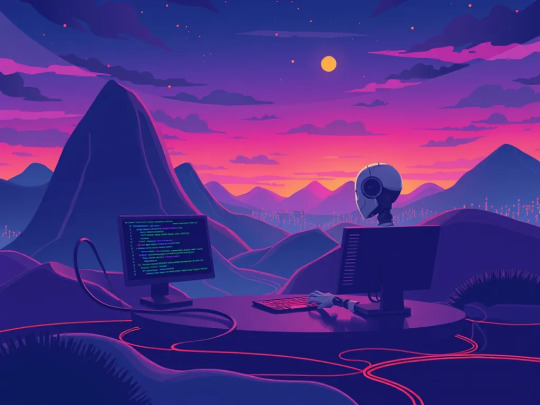
Vibe coding isn't about the code, its about the intent.
That’s the radical idea behind this new approach to building things with technology. Vibe Coding, as defined by Andrej Karpathy, is the practice of using AI tools and minimal human input to create functional, even elegant, digital experiences—without getting bogged down in the weeds of technical execution.
It’s coding for the rest of us, where the focus is on what you want to build, not how. And it’s a movement that’s quietly upending the world of software development.
The tools of the trade are usually Cursor IDE, Windshark, and in some cases plain old ChatGPT. Usually Claude Sonnet gives better results with Cursor. However now the newer models which are geared towards coder are killing it.
Before it got a name, this has been popular and there were many that were building code through this. I recently saw a team of high school students win a bootcamp with a Vibe-Coded app. They wanted pitched a "Smart AI Mirror" that would provide a score for skin health. As a demo of how it would appear, they vibe coded a webapp. They had no knowledge on React or Tailwind. They know what they wanted and voila they had an app.
My Vibe Coding Experiment
I wanted a digital clock for my pomodoro sessions. Something like bigtimer.net; however the ads in them were a turnoff. That started my quest to build it. Instead of my approach of starting with an architecture and design, I thought why not vibe it out.
The result - a working app - dejoe.github.io/timer ; I used plain prompts with no prompt engineering. This was intentional to see the mileage I could get without getting fancy. Also did not provide it with technical inputs. There was only one place where I did provide it with a technical input, mostly because I was being impatient.
Here are the prompts that I had used :
Write a javascript and HTML program, that will create a full page timer.
The page must contain two elements:
Clock. The clock should just be mm:ss. It should start decrementing seconds for every second when the clock is started
Start Button. The start button on click must start the clock. Then it should convert into stop button. The start button must be center aligned and below the clock.
___________
There should be a way to enter the hours and seconds before starting the clock.
___________
There are a few issues with this.
Input has hours and minutes.
Display has both only minutes and seconds. The clock display should have hours minutes and seconds.
Then if there are no hours input, then it must not display NaN
___________
This looks good, can you make it full screen though
___________
the .container has 100vw. However the clock font is small. It does not expand to fit the entire screen.
___________
this code works.
Can you style the button a bit
___________
two more requests. Can you make the inputs and the buttons take up a single line.
Also can you create a fullscreen mode. Where the page will occupy the full screen.
Also a dark mode.
If possible have a bottom panel, which will fit all the above buttons, along with the input and start / stop button
___________
can you make the font of the clock to be 24vw instead of javascript based font size
Then can you provide a way to pause the timer when it has started apart from stopping.
Also can you provide beep for 5 seconds, when the timer reaches 0
____________
javascript error in the page
____________
Learnings:
AI does the heavy lifting, with minimal input. The less I specified, the more it relied on its own “vibe” of what a timer should be.
Dark mode and fullscreen? Just ask. I didn’t explain how to implement them—I just wanted them. The model figured it out.
You’ll get features you don’t want. The hours part in the clock? I still don’t use it. But I let it stay. Perfection is the enemy of the vibe.
Vibe Coding isn’t about replacing developers—it’s about expanding the definition of who can create. It’s about saying, “I want this thing. Make it happen.”
The high schoolers won because they focused on the vibe of their idea, not the technical specs. They didn’t get lost in the code; they got lost in the why.
So, what do you want to build? A productivity tool? A personal dashboard? A silly game? Write down. Be lazy with your prompts. Let the AI do the heavy lifting.
0 notes
Text
This Week in Artificial Intelligence News - October 4th, 2024
```html
Introduction
Hello, tech enthusiasts! This week, let's explore what's new in the world of artificial intelligence. From advanced simulations to exciting OpenAI updates, AI is changing industries all around us. Discover how these changes impact our work, fun, and visions of the future!
Smarter Simulations with AI
AI is making simulations more precise. At MIT, researchers found better ways to sort data in simulations. By spreading data points better, predictions improved a lot. This is great for scientists and businesses using simulations for insights.
FLUX Gets a Super-Charged Upgrade
The updated FLUX, now called FLUX1.1 [pro], has arrived. It’s much faster and creates beautiful images. The BFL API helps developers add FLUX to their projects, sparking creativity.
ChatGPT's New Writing and Coding Space
OpenAI is rolling out "canvas," a new tool for writing and coding. It's not everywhere yet, but it's making big projects easier. Testers say it simplifies their creative work.
Training Super-Smart AI Models
AI models need more power as they get smarter. Scientists now use many computers together to train them. This teamwork helps AI reach new heights.
Creating Images from Sketches
With KnobGen, anyone can turn sketches into amazing images. This opens creative doors for artists and doodlers alike. Art is for everyone, regardless of skill!
OpenAI's Big Changes
OpenAI is a leader in AI but faces challenges too. They're investing big to test AI limits while staying financially healthy. Plus, they're making voice assistant creation easier, aiming for more intuitive tech.
Voice Assistants Made Easy
OpenAI's new tools make building voice assistants simpler. Soon, more devices might understand and talk back, making our tech cooler.
AI and Coding: Work in Progress
Many hoped AI would solve coding, but it still has work to do. AI helps developers but cannot replace them. Human skill is still key in software development.
Microsoft's Co-Pilot Plus and Innovations
Microsoft's Co-Pilot Plus brings exciting features. Using Neural Processing Units (NPUs), it improves privacy by keeping data off the cloud. These changes make PCs safer and smoother.
Click-To-Do and AI Search Enhancements
Click-To-Do offers easy search and image tools. Offline search upgrades help users stay organized without the internet.
Co-Pilot Labs and Vision
Co-Pilot Labs offers AI tools to tackle tough problems. Co-Pilot Vision lets users navigate web content by voice, making online interactions more engaging.
AI Search and Publishing
Bing's search is getting smarter with new AI features. This could spotlight creators' work, boosting their search visibility.
Nvidia’s Open-Source AI Model
Nvidia launched NVLMD 72B, a strong open-source AI model. This brings fresh competition to the AI game, especially in vision AI.
Generative AI in E-Commerce
Pinterest uses generative AI to design eye-catching product images. This creative advertising trend is spreading to other companies like Shopify.
AI Tool Updates: Google and Adobe
Google Lens now reviews videos, not just photos. Adobe's creative tool updates
0 notes
Text
ChatGPT can generate HTML/CSS based on simple ASCII mockups
I was pleasantly surprised to discover that ChatGPT 4 can interpret simple ASCII art and do a decent job converting simple designs into HTML/CSS; to quickly create the initial ASCII design I'm using this online tool https://asciiflow.com/ and for the prompt I have used "Generate HTML and CSS (using flexbox) based on the following ascii art:"
Some examples of the ASCII and the result:
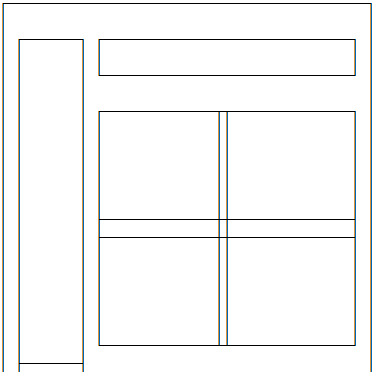
Result:
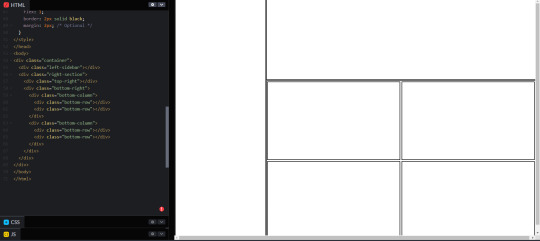
Example #2:
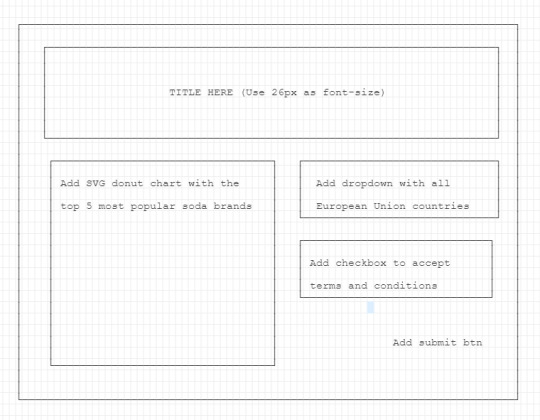
Result:
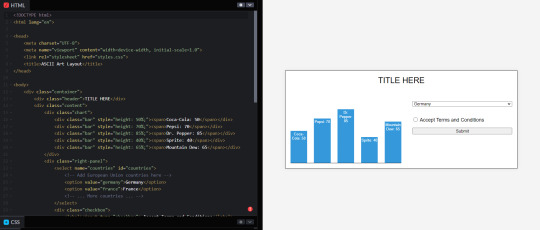
For this last example the attempt to make it generate a SVG donut chart failed (it gave me a placeholder and suggested to use a JS library to do so instead), so I had to ask it to replace it with vertical bars which are easier to generate, I also had to ask it to "hardcode all countries that belong to the European Union even if its not practical or maintanable" because it was giving me a placeholder and suggesting to "Use an API" to fetch those, which is not bad advice but for quick mockups may not be desirable.
I tried more complicated task like making it animate an ASCII cat art using multiple elements (as they were "frames") but it consitently failed, it did seem to understand that it should show just one element each fraction or a second to the create the motion illusion but it failed on the artistic endeavor of modyfing existing ASCII art.
I hope you find this info helpful, and if you have insights of what works and what doesn't when using ASCII art on ChatGPT to mock up webpages (or anything else) feel free to share those in the comment section below or in the HN thread.
That's the end of the post but while you are here...
My name is Ivan and I'm a Full-stack programmer, I live in Colombia and I’m looking for a remote job as Full-Stack Engineer so if you or you company are interested in hiring just let me know! I'm also open to Visa Sponsorship opportunities (EU or US). I have more than 10 years of experience with JavaScript, as well as a few years with TypeScript, React, Python, PHP, Git and Node, as well as knowledge of good software practices such as SOLID architecture, unit testing, regression testing, e2e testing; if you are interested in hiring me please reach me at ivanca at gmail
0 notes
Text
Generating HTML with ChatGPT
Explore the power of #ChatGPT in generating HTML code! 🚀 Check out our step-by-step guide on using this groundbreaking #AI tool to revolutionize code generation and software development. #OpenAI #GPT4 #Coding #HTML #ArtificialIntelligence
# Introduction to ChatGPT and LLMs ChatGPT, an advanced language model developed by OpenAI, has been making waves in the field of Artificial Intelligence. Based on the GPT-4 architecture, this innovative model has opened up new possibilities for various applications, including code generation. Language models like ChatGPT, often referred to as Large Language Models (LLMs), have the potential to…

View On WordPress
#can chat gpt replace programmers#chatgpt#chatgpt plus#gpt4#llms#will chatgpt kill google#will chatgpt replace develoeprs#will chatgpt replace html designers#will chatgpt replace jobs#will chatgpt replace writers
0 notes